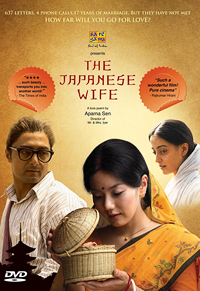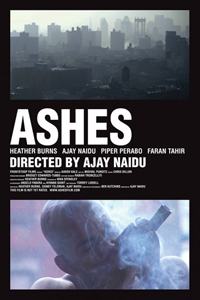
| Previews |
| bollyspice.com India Beyond Bollywood: Mahindra Indo-American Arts Council Film Festival 9 Nov 2010 |
 The Mahindra Indo-American Arts Council (MIAAC) film festival is about to launch its tenth annual program of films, panels, and parties in New York this week. The festival is being held at the SVA THEATER and is taking place on November 10th through the 14th. There is a huge world of Indian cinema beyond Bollywood and each of India's 22 or so official languages has at least one film industry. Though much of the truly original and sophisticated Indian cinema of the 21st century is created outside of the big Bombay studios, many wonderful movies go unseen outside their own regions, even in India. MIAAC started bringing independent, "regional," and diasporic/multicultural films -- as well as the occasional well-chosen Bollywood bouquet of delights -- to a smart and engaged Manhattan audience long before the now-big-news "Hindie" independent movement took off, and long before the MIAAC festival itself introduced such memorable movies as Danny Boyle's Slumdog Millionaire and Mira Nair's The Namesake to the United States audience. The Mahindra Indo-American Arts Council (MIAAC) film festival is about to launch its tenth annual program of films, panels, and parties in New York this week. The festival is being held at the SVA THEATER and is taking place on November 10th through the 14th. There is a huge world of Indian cinema beyond Bollywood and each of India's 22 or so official languages has at least one film industry. Though much of the truly original and sophisticated Indian cinema of the 21st century is created outside of the big Bombay studios, many wonderful movies go unseen outside their own regions, even in India. MIAAC started bringing independent, "regional," and diasporic/multicultural films -- as well as the occasional well-chosen Bollywood bouquet of delights -- to a smart and engaged Manhattan audience long before the now-big-news "Hindie" independent movement took off, and long before the MIAAC festival itself introduced such memorable movies as Danny Boyle's Slumdog Millionaire and Mira Nair's The Namesake to the United States audience.From Mani Ratnams's big-budget Tamil-language take on Ram and Sita in Raavanan, to Ajay Naidu's English-language Ashes, a gritty story of mental illness, greed, drugs, and family, MIAAC's amazingly well-curated programming includes a range of features, documentaries, and short films, by or about Indians, that were made throughout India and the rest of the world. This festival has been the first place a lot of us, both eastern- and western-born, first got to know the overwhelming richness of the whole of Indian cinema in its endless variety of stories, styles, and languages. If you just walk into a film that's about to start at MIAAC and take a seat, it is very likely that your own world will be enlarged by the time you leave. Aroon Shivdasani, Indo-American Arts Council Executive Director, and L.Somi Roy, Film Festival Director, have long enjoyed the respect and support of New York's culturally vibrant Indian community. Salman Rushdie, Madhur Jaffrey, Mira Nair, and other well-known Indian New Yorkers are expected at various events. Post-film discussions with directors and other guests have been organized by Richard Allen, faculty chair of the New York University Department of Cinema Studies.  This year's lineup includes films in at least nine languages, all screened with subtitles, including one offering in Hebrew-Hindi-English (Rafting to Bombay, about a colony of Jews in Mumbai who arrived as refugees during World War II), as well the now-expected great array of galas, screenings, discussions, and industry panels -- open to everyone -- with directors, stars, and other guests from India and elsewhere, and free (and glamorous) after-parties for ticket-holders. This year's lineup includes films in at least nine languages, all screened with subtitles, including one offering in Hebrew-Hindi-English (Rafting to Bombay, about a colony of Jews in Mumbai who arrived as refugees during World War II), as well the now-expected great array of galas, screenings, discussions, and industry panels -- open to everyone -- with directors, stars, and other guests from India and elsewhere, and free (and glamorous) after-parties for ticket-holders.In addition, there will be a sidebar festival, a wonderful opportunity to see some films of the heartbreakingly wonderful Smita Patil on a big screen with subtitles: "Bhumika: the Roles of Smita Patil," produced in partnership with the Film Society of Lincoln Center, at the Walter Reade Theater. (Full information at http://www.filmlinc.com/wrt/onsale/patil.html : note this side festival continues on after MIAAC, through November 18). Opening, Closing, Centerpiece MIAAC program highlights include: Opening Night - Shor, directed by Raj Nidimoru and Krishna DK, three stories set during the Ganesha festival of Mumbai, with Sendhil Ramamurthy and Tushar Kapoor; the Festival Centerpiece, Memories in March, directed by Sanjoy Nag and written by and starring Rituparno Ghosh ( in attendance along with Raima Sen and Deepti Naval): when she travels to Kolkota to collect the belongings of a son who has died, a mother finds out that he had a life she knew nothing about. (In addition to the evening’s after-party, there will be a special pre-party for Memories on Thursday, whose hosts include the South Asian Lesbian and Gay Association.) The closing night feature is Cooking With Stella, written by Deepa Mehta in collaboration with her brother Dilip, who directed, about what happens inside the kitchen and out when a Canadian couple takes on a diplomatic assignment, and a kitchen staff, in Delhi.  A small sample of a rich program A small sample of a rich programA few other notable program entries include two children’s movies - a great opportunity, these almost don’t exist in India -- The White Elephant, with Tannishta Chatterjee (Aijaz Khan, director) and an animated feature version of The Ramayana, produced by Ketan Mehta and written and directed by Chetan Desai. In addition, Mani Ratnam will be present at a special showing of Raavanan. New York’s own Samrat Chakrabarti, now appearing on national television in the series In Treatment, is in The Waiting City (Claire Mitchell, director), along with Radha Mitchell, about an Australian couple who’ve traveled to Kolkota to adopt a child. And in another category just now being explored by a new generation of filmmakers - India has not produced documentary features until very recently - the award-winning Leaving Home, about Indian Ocean, “the baap of all Indian rock bands” [The Hindu], performing together for more than 15 years, here seen in intimate rehearsal, in small-venue performance, and in all-stops-out concert mode. The poignancy of the film was sadly deepened by the recent death of a founding band member, Asheem Chakravarty, who appears in it. For full information,/MIAAC2010/index.htm. |
| Source: http://www.bollyspice.com/view.php/5948-india-beyond-bollywood-mahindra-indo-american-arts-council-film-festival.html |